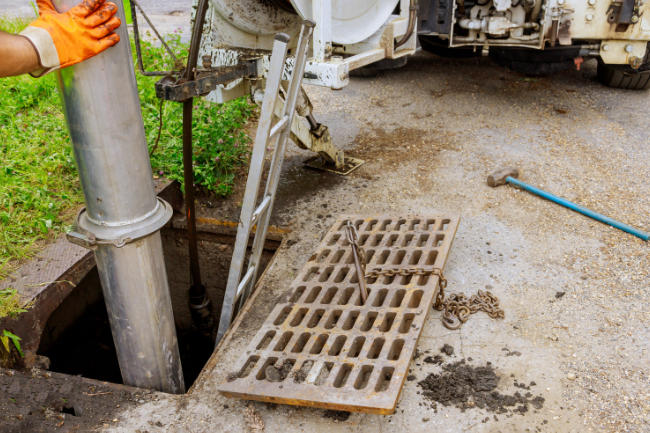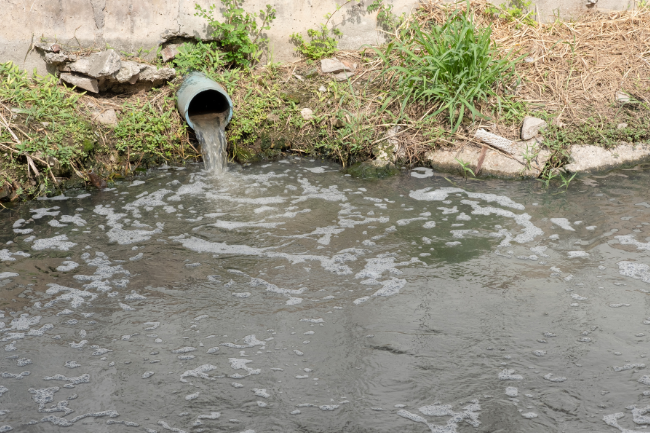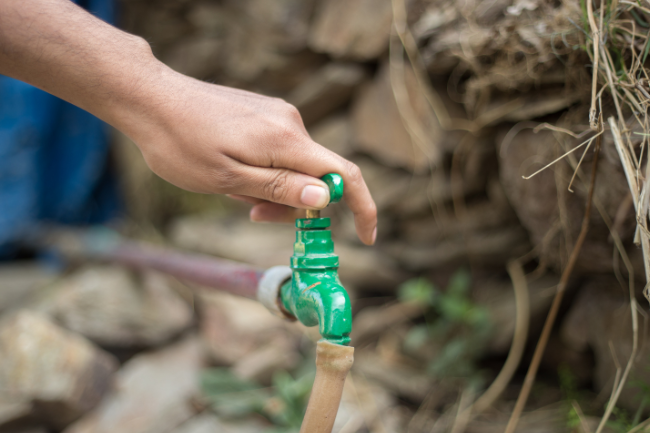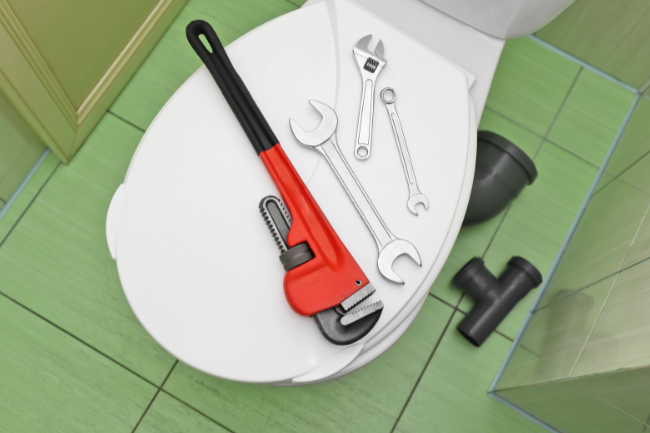Everything You Need to Know About Municipal Drainage Systems
Posted by William Heinselman on

Municipal drainage systems may not always be in the spotlight, but they play a pivotal role in our daily lives. These intricate networks of pipes, channels, and infrastructure are responsible for managing rainwater, wastewater, and storm runoff in our cities and communities.
Understanding municipal drainage systems is essential for anyone who cares about urban planning and environmental sustainability or for those who simply want to know more about the unseen infrastructure that keeps our cities functioning smoothly.
What is a Drainage System?
In Sacramento, as in many urban areas, storm drains and sewer drains are vital components of the city's infrastructure, serving distinct but equally important purposes in managing water flow and wastewater disposal.
Storm Drains
Storm drains in Sacramento form a crucial component of the city's infrastructure, working tirelessly to mitigate the risks of flooding during heavy rain and storms. These systems consist of underground pipes, surface channels, and street gutters strategically placed throughout the city.
By efficiently collecting and directing rainwater and storm runoff, Sacramento's storm drains help protect properties and streets from potential water damage. Beyond their primary function, these stormwater management systems also play a pivotal role in preserving water quality by preventing the discharge of pollutants into local water bodies.
Regular maintenance and upkeep are imperative to ensure these storm drains remain clear of debris, functioning optimally, and safeguarding the city from the impacts of inclement weather.
Sewer Drains
Sewer drains are responsible for collecting and transporting sewage and wastewater from homes, businesses, and industries to dedicated treatment facilities. By doing so, they ensure the safe and sanitary disposal of waste, safeguarding public health and the environment. Sacramento maintains a separate sewer system, distinct from storm drains, to prevent overflows during heavy rainfall, minimizing the risk of contamination.
Under the oversight of the Sacramento Area Sewer District (SASD), sewer drains undergo routine inspections, repairs, and necessary upgrades to guarantee their reliability and adherence to regulatory standards. The proper functioning of Sacramento's sewer drains is paramount in maintaining the city's overall sanitation and environmental sustainability.
How Municipal Drainage Systems Work
Municipal drainage systems serve two primary functions: stormwater management and wastewater disposal.
Stormwater Management

Storm drains and catch basins collect rainwater and transport it through a system of pipes and channels to prevent flooding during heavy precipitation. These systems often incorporate filtration to maintain water quality.
Let's take a closer look at how storm drains and catch basins work and the importance of filtration for maintaining water quality.
Storm Drains
Storm drains are typically located on streets, parking lots, and other paved surfaces. They consist of grated openings or inlets that allow water to enter the underground drainage system.
The primary purpose of storm drains is to quickly collect rainwater and direct it away from these surfaces, preventing pooling and potential damage. The collected water is then transported through a network of pipes and channels to a suitable discharge point, such as a river, lake, or treatment facility.
Catch Basins
Catch basins, also known as stormwater pits or sumps, are underground chambers connected to the storm drain system. They are strategically placed to capture sediment, debris, and other pollutants carried by the stormwater runoff.
They typically have a grate or an opening covered with a filter to prevent large particles from entering the system. The captured debris settles at the bottom of the catch basin, while the filtered water continues to flow through the system.
Filtration for Water Quality
To maintain water quality, municipal drainage systems often incorporate filtration methods within the storm drain and catch basin infrastructure. Filtration helps remove pollutants, sediments, and contaminants from the stormwater runoff before it is discharged into natural bodies of water or sent for further treatment.
Common filtration techniques used in municipal drainage systems include:
- Sediment Traps: These traps capture and retain sediment particles, preventing them from entering the drainage system.
- Oil Water Separators: These devices remove oil, grease, and other hydrocarbons from the stormwater runoff, preventing them from contaminating water sources.
- Filter Media: Filter media, such as sand or gravel beds, can help to further filter and cleanse the stormwater by trapping finer particles and impurities.
By incorporating filtration into municipal drainage systems, the quality of water discharged into the environment can be significantly improved. This helps protect aquatic ecosystems, prevent contamination of drinking water sources, and maintain the overall health and balance of the surrounding environment.
Wastewater Disposal
Meanwhile, sanitary sewer systems collect and transport wastewater to treatment plants, where it undergoes purification processes before safe disposal or reuse. Both systems require regular maintenance to ensure they function effectively, safeguard public health, and protect the environment.
Let's delve deeper into how sanitary sewer systems work.
Collection and Transport
Sanitary sewer systems consist of a network of underground pipes that carry wastewater from various sources, such as toilets, sinks, showers, and industrial facilities. This wastewater, also known as sewage, contains organic matter, pathogens, chemicals, and other contaminants.
The network of pipes transports the sewage through gravity or by using pump stations to lift it to higher elevations, ensuring a continuous flow toward the treatment plant.
Treatment and Purification
Once the wastewater reaches the treatment plant, it undergoes a series of purification processes to remove impurities and harmful substances. These treatment processes typically include:
- Preliminary Treatment: During this stage, large debris, such as rocks, rags, and sticks, are screened out and removed from the wastewater.
- Primary Treatment: In this phase, the sewage passes through sedimentation tanks where suspended solids settle to the bottom as sludge, while oil and grease float to the surface and are skimmed off.
- Secondary Treatment: This step involves the use of biological processes to break down organic matter and remove dissolved pollutants. Common methods include activated sludge processes, trickling filters, or constructed wetlands.
- Tertiary Treatment: Sometimes, an additional purification step is required to further treat the wastewater. This can involve advanced filtration, disinfection with chemicals or ultraviolet light, and nutrient removal to protect water bodies from excessive nutrients.
Importance of Regular Maintenance
With a consistent maintenance plan, municipalities can stay proactive in maintaining their sanitary sewer systems to prevent costly problems down the line. The benefits of committing to ongoing maintenance plans include the following:
- Prevent Blockages: Over time, debris, grease, tree roots, and other materials can accumulate and clog the sewer pipes. Regular maintenance, including cleaning and sewer video inspections, helps identify and remove these blockages before they cause backups and overflows.
- Extend Lifespan: Proper maintenance, including repairs and replacements of damaged pipes or manhole rehabilitation, extends the lifespan of the sewer system infrastructure, reducing the risk of costly and disruptive failures.
- Protect Public Health: By promptly addressing issues and ensuring smooth operation, regular maintenance prevents sewage backups, leaks, and releases of untreated or partially treated wastewater into the environment, safeguarding public health and preventing the spread of diseases.
- Environmental Protection: Effective sewer system maintenance helps prevent the release of pollutants into water bodies, preserving water quality, and protecting aquatic ecosystems.
The Role of Water Conservation

Water conservation plays a crucial role in municipal drainage systems by reducing the volume of water that needs to be managed within these systems.
When individuals, businesses, and communities actively practice water conservation measures, such as reducing excessive water use, fixing leaks, and implementing efficient irrigation methods, they contribute to a decrease in overall water runoff and wastewater generation. This, in turn, eases the burden on stormwater and sewer systems, mitigates the risk of flooding during heavy rain, and minimizes the load on wastewater treatment facilities.
Water conservation in the context of municipal drainage systems is not only environmentally responsible but also aids in maintaining the efficiency and longevity of these essential urban infrastructures.
Municipal Drainage System Maintenance in Sacramento
The city of Sacramento bears the responsibility of ensuring the maintenance and proper functioning of its drainage systems. This duty encompasses regular inspections, cleaning, and repairs to prevent blockages and flooding during storms.
At Express Sewer & Drain, we understand the heightened pressures faced by municipal decision-makers when confronted with unexpected challenges. That's why we are dedicated to delivering top-notch, trenchless sewer repair solutions and several other municipal plumbing services to clients at a cost-effective rate. Contact us today to learn more about our services!
Topics: Plumbing in Sacramento, Municipal Plumbing, Sewers



![How to Prevent Flooding [6 Tips to Protect Your Property]](https://www.expresssewer.com/hubfs/prevent_flood.png?width=550)



